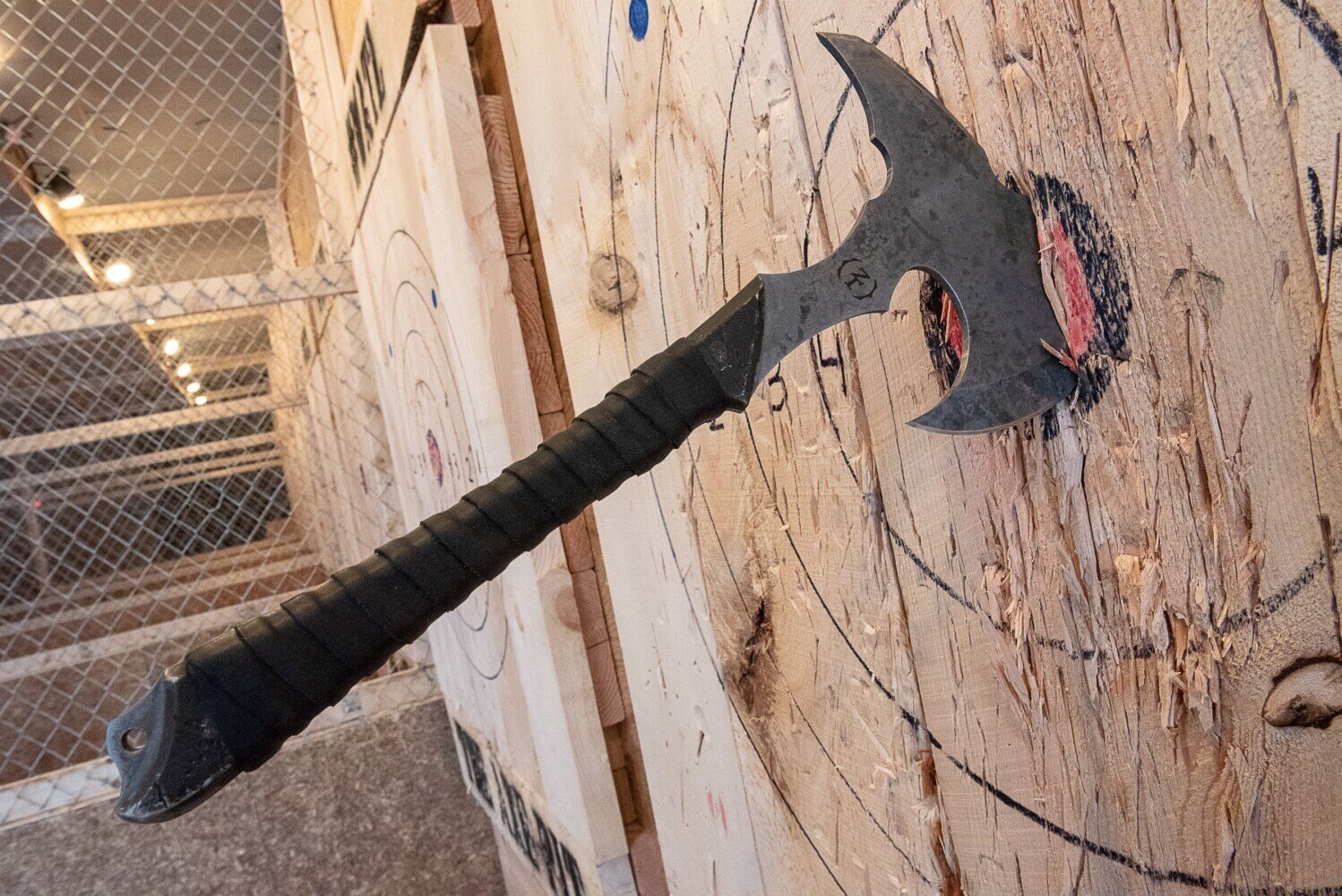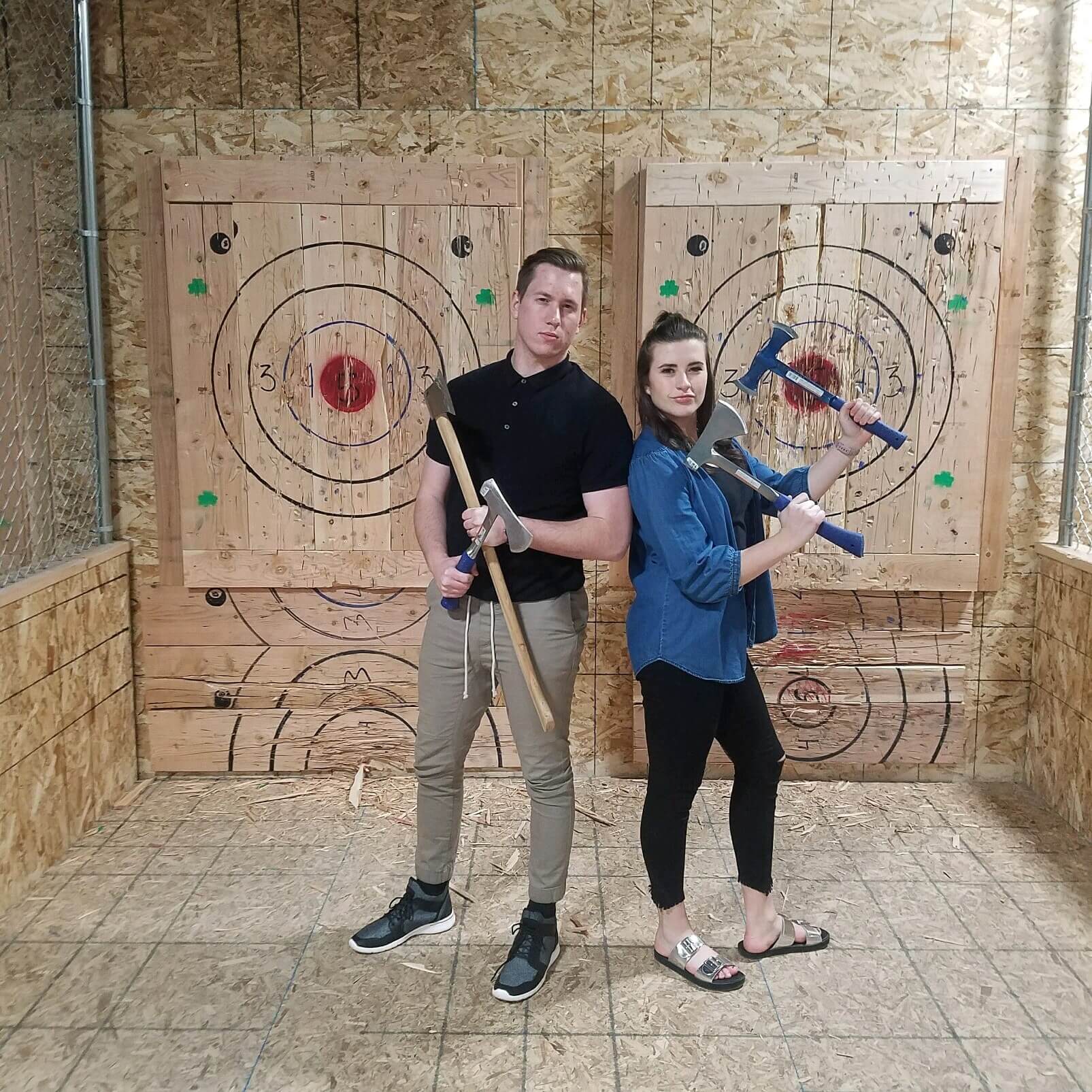Axe Throwing Denver: Experience the most effective of Indoor Leisure
Axe Throwing Denver: Experience the most effective of Indoor Leisure
Blog Article
The Fun of Axe Throwing: How This Sport Integrates Skill and Adrenaline for a Great Time
Axe throwing has actually emerged as an astounding sport that masterfully intertwines the demand for specific ability with the rush of adrenaline, offering participants a distinct and engaging experience. The act of hurling an axe towards a target requires concentration and technique, simultaneously promoting an environment of sociability and friendly competition. This interesting mix of psychological focus and physical effort has made axe throwing a preferred selection for those seeking both entertainment and a feeling of accomplishment. To really value the depth and allure of this activity, one need to consider its origins, the required equipment, and the fundamental strategies that make certain both safety and security and satisfaction.
The Origins of Axe Throwing
Axe tossing, an entertainment activity that has acquired significant popularity in recent years, traces its roots back to old times. The earliest documents of axe use in affordable contexts are found amongst the Celts and Vikings, who tossed axes for sporting activity as well as in battle training.
Medieval European warriors, specifically during the Center Ages, exercised axe tossing as part of their martial training. The Francisca, a kind of tossing axe used by the Franks, became renowned for its deadly precision. This standard weapon was created to be thrown at enemy guards and armor, showcasing its twin utility in both sport and battle.
In even more recent history, axe tossing saw a resurgence in the logging camps of North America in the 19th and 20th centuries. Lumberjacks would involve in pleasant competitors, evaluating their precision and strength by targeting at wooden targets. This development from a survival skill to a leisure task has led the way for its modern-day resurgence, with dedicated venues and leagues now commemorating the sporting activity around the world.
Tools You Need
Comprehending the rich history of axe tossing boosts the admiration of the sport's modern version. For competitive and leisure axe tossing, the most commonly utilized type is the hatchet, usually weighing in between 1.25 to 2 pounds with a deal with length of around 16 inches.
Just as important is the target. Regulation targets are constructed from wood, with softwood varieties like ache or cottonwood being chosen for their capability to hold the axe and soak up. The target is usually split right into five concentric circles, each with a certain point worth, to assist in rating.
Security gear, however commonly ignored, is essential. Protective handwear covers can enhance grasp and avoid blisters, while closed-toed footwear are a should to secure feet from dropped axes (denver axe throwing). A well-lit, roomy tossing location, full with safety barriers, ensures a regulated atmosphere where individuals can focus on sharpening their skills.
Basic Techniques Discussed
Mastering the basic methods of axe throwing is necessary for both security and effectiveness. The first method to recognize is the hold. Hold the axe with a company, yet unwinded grasp, comparable to holding a golf club. The leading hand ought to be placed directly listed below the axe head, while the non-dominant hand sustains the end of the take care of.
Your dominant foot must be a little onward, aligning with your target. This positioning aids in keeping stability and guiding power precisely towards the target.

Safety And Security First
Guaranteeing security in axe throwing is paramount to producing a delightful and injury-free experience. Precaution begin with the place design. A well-designed axe throwing facility features clear demarcations between throwing lanes, tough backgrounds to capture roaming axes, and non-slip flooring to protect against crashes. Additionally, adequate lighting is important to assist participants preserve aesthetic accuracy and spatial understanding.
Benefits of Axe Throwing
Axe throwing offers a myriad of benefits that expand beyond simple recreation. Literally, it provides a full-body exercise, engaging muscle mass in the arms, shoulders, back, and core. The repetitive movement of throwing the axe also improves hand-eye coordination and great motor abilities. For those aiming to improve their total physical fitness, axe throwing can work as a appealing and vibrant form of workout.
Emotionally, axe throwing needs precision, emphasis, and technique, making it an excellent means to hone cognitive skills. The focus required to hit the target can act as a form of mindfulness, allowing participants to clear their minds and minimize stress and anxiety. This mental engagement can be specifically helpful in helping individuals develop far better problem-solving abilities and psychological durability.
Socially, axe throwing is usually appreciated in team setups, promoting team-building and friendship. Whether as component of a company event or a casual trip with resource close friends, the sporting activity encourages interaction and collaboration. Additionally, the common experience of discovering and enhancing with each other can reinforce partnerships and develop enduring memories.
Verdict

The earliest records of axe usage in affordable contexts are discovered among the Celts and Vikings, who threw axes for sporting activity as well as in battle training. Release the axe when your hands are roughly at eye degree, permitting the axe's all-natural turning to assist it towards the target.
A properly designed axe tossing facility features clear separations between throwing lanes, sturdy backgrounds to catch roaming axes, and non-slip floor covering to stop crashes. Individuals need to be instructed on the appropriate way to handle and throw the axe, emphasizing regulated, calculated activities over strong tosses.
In summary, axe throwing stands out as a sporting activity that masterfully integrates adrenaline, ability, and precision.
Report this page